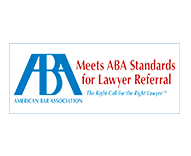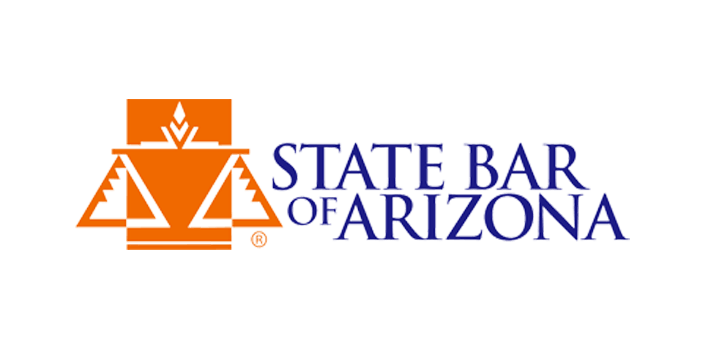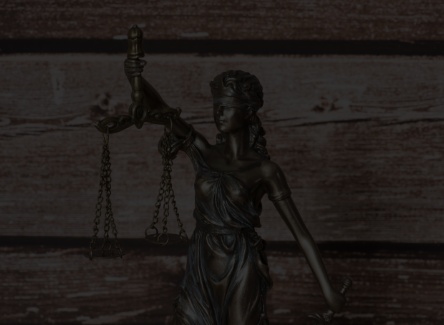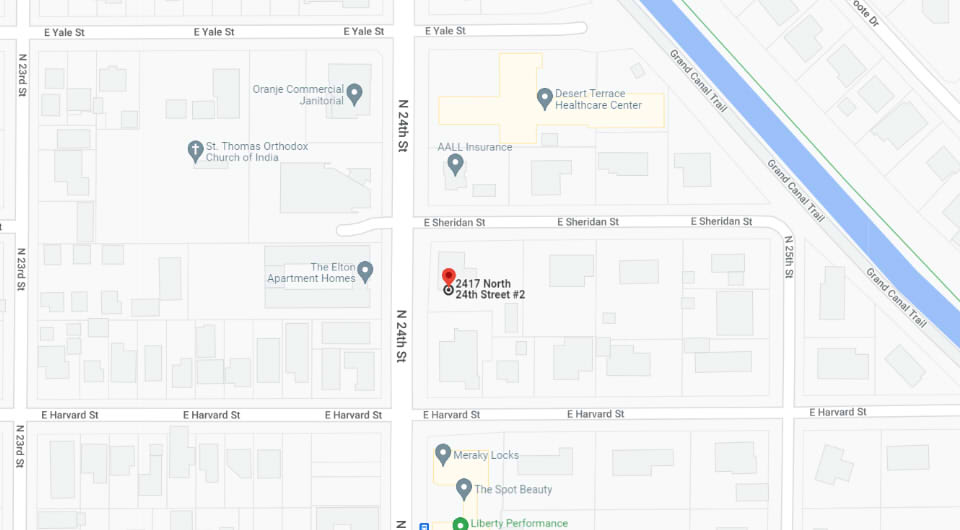Bell's palsy is a condition characterized by sudden facial paralysis caused by inflammation or damage to the facial nerve. In some cases, medical negligence or malpractice can be a contributing factor to the development of Bell's palsy. Medical malpractice in Bell's palsy cases may involve misdiagnosis, improper treatment, failure to recognize the condition's symptoms, or neglect to address potential underlying causes of facial paralysis.
If you or a loved one has been diagnosed with Bell's palsy due to potential medical negligence or malpractice, we encourage you to contact us at Phoenix Personal Injury Attorney Law Firm. We can provide you with personalized legal representation, guide you through the legal process and help you seek compensation.
Understanding Bell’s Palsy
Bell's Palsy occurs when the seventh cranial nerve, known as the facial nerve, becomes inflamed and compressed. This nerve is responsible for transmitting signals from the brain to the facial muscles, enabling various facial movements such as smiling, blinking, and frowning. When the facial nerve is impaired, the affected side of the face loses its ability to function correctly, resulting in weakness or paralysis.
The Relationship Between Medical Malpractice and Bell’s Palsy
When Bell's palsy occurs in newborns, it is essential to consider the possibility of medical malpractice. Medical malpractice in Bell's palsy cases involving newborns may include:
- Misdiagnosis — If a healthcare provider fails to recognize the symptoms of Bell's palsy in a newborn or misdiagnoses the condition as something else, it can delay necessary treatment.
- Improper Treatment — The use of inappropriate or ineffective treatment methods for Bell's palsy in newborns may lead to further complications or delay recovery.
- Failure to Consider Underlying Causes — Bell's Palsy in newborns can be caused by various factors, including infections or nerve damage during delivery. Failing to investigate and address potential underlying causes can contribute to the development of the condition.
Symptoms of Bell’s Palsy
Below are some of the symptoms of Bell's palsy in newborns:
Asymmetrical Facial Expression
One of the most noticeable signs of Bell's palsy in a newborn is an asymmetry in facial expressions. A baby affected by the condition may exhibit a lack of movement on one side of the face while the other side appears normal. This can become evident when the baby smiles, frowns, or cries.
Difficulty Closing the Eye
Newborns with Bell's palsy may have difficulty fully closing the eye on the affected side. This can lead to eye dryness, increased tear production, and potential exposure to irritants and infections.
Weakness in Sucking and Swallowing
Bell's Palsy can affect the muscles responsible for sucking and swallowing. Infants may experience breastfeeding or bottle-feeding difficulties due to weakened facial muscles.
Altered Crying Pattern
The baby's crying pattern might change, with a noticeable difference in the sound or intensity of cries due to facial muscle weakness.
Facial Asymmetry at Rest
Even when the baby is at rest, you may observe asymmetry in the facial appearance. The mouth on the affected side may droop, while the opposite side appears unaffected.
Absence of Blink Reflex
Normally, newborns have a blink reflex in response to sudden bright lights or loud noises. However, in babies with Bell's palsy, the affected eye may not blink in response to such stimuli.
Medical Diagnosis and Treatment
When parents or healthcare providers notice any symptoms of Bell's palsy in a newborn, immediate medical attention is vital. An evaluation by a pediatrician or a specialist in neonatal care can help confirm the diagnosis. Diagnostic tests, such as electromyography (EMG) and nerve conduction studies, may be conducted to assess nerve function and rule out other potential causes of facial paralysis.
Treatment for Bell's palsy in newborns focuses on providing supportive care and addressing potential complications. In some cases, corticosteroids may be prescribed to reduce inflammation and promote nerve recovery. Protecting the affected eye from dryness and irritation is also crucial, and eye drops or ointments may be recommended.
Recovery from Bell's palsy in newborns can vary, with some infants experiencing a complete resolution of symptoms over time, while others may have lingering effects. Early intervention, appropriate medical care, and parental support can significantly influence the outcome and help the baby adapt to any residual facial weakness.
Bell's Palsy and Medical Malpractice: Establishing Negligence
When a patient suffers Bell's palsy due to the carelessness or improper actions of a medical professional, it may give rise to a medical malpractice claim. Proving medical malpractice in Bell's palsy cases requires establishing negligence on the part of the healthcare provider involved. Below are the crucial elements involved in establishing medical malpractice in Bell's palsy cases.
Duty of Care
The first step in proving medical malpractice is demonstrating that a doctor-patient relationship existed. This means that the healthcare provider had a duty of care toward the patient, and the patient sought medical treatment or advice from the provider for Bell's palsy symptoms.
Breach of Duty
To establish negligence, it must be shown that the healthcare provider breached the standard of care expected in similar circumstances. Standard of care refers to the level of care and skill that a reasonably competent medical professional with similar training and experience would provide. In Bell's palsy cases, this may involve the failure to properly diagnose the condition, provide appropriate treatment, or consider potential underlying causes of facial paralysis.
Causation
It is not enough to show that the healthcare provider deviated from the standard of care; there must be a direct link between their actions (or lack thereof) and the patient's Bell's palsy diagnosis. It must be demonstrated that the negligence of the provider was the proximate cause of the facial paralysis.
Damages
In a medical malpractice case, there must be quantifiable damages suffered by the patient as a result of the negligence. Damages can include physical pain, emotional distress, medical expenses, loss of income, and any other harm caused by Bell's palsy diagnosis.
Expert Testimony
Medical malpractice cases often require expert testimony from medical professionals who specialize in the relevant field. In Bell's palsy cases, medical experts may provide opinions on whether the standard of care was breached and how negligence contributed to the patient's condition.
Filing a Bell's Palsy Lawsuit
Filing a lawsuit is a complex legal process that requires careful consideration and expertise. Here is an overview of the steps involved in filing a Bell's palsy lawsuit and shed light on the legal process.
Consultation with an Attorney
The first step in pursuing a Bell's palsy lawsuit is to seek consultation with an experienced personal injury attorney who specializes in medical malpractice cases. During the initial consultation, the attorney will evaluate the details of your situation, review medical records, and assess the potential for a successful lawsuit.
Investigation and Gathering Evidence
Once you decide to proceed with the lawsuit, the attorney will conduct a thorough investigation into the case. This involves gathering medical records, expert opinions, witness statements, and any other evidence that can support your claim. The goal is to establish a strong case demonstrating that medical negligence or malpractice led to the development of Bell's palsy.
Pre-Litigation Negotiations
In some cases, before formally filing a lawsuit, your attorney may engage in pre-litigation negotiations with the at-fault party or their insurance company. This step aims to explore the possibility of a settlement and avoid protracted litigation. If a fair settlement cannot be reached, the lawsuit will move to the next phase.
Filing the Lawsuit
If pre-litigation negotiations are unsuccessful, your attorney will draft a complaint detailing the allegations and file it with the appropriate court. The defendant, typically the medical professional or healthcare facility, will then be served with the complaint and officially notified of the lawsuit.
Discovery Phase
The discovery phase is a crucial part of the legal process, during which both parties exchange information and evidence. This phase may involve depositions, interrogatories, document requests, and expert witness testimonies. Discovery allows each side to gather evidence and build their case.
Pre-Trial Motions
Before the trial, the parties may file pre-trial motions to address specific legal issues or evidence that may impact the case's outcome. These motions seek to resolve certain aspects of the case or request the court to exclude or admit certain evidence.
Settlement Negotiations
Throughout the legal process, settlement negotiations may continue between the parties. Many cases are resolved through settlements to avoid the uncertainties of trial. Your attorney will advise you on the fairness of any settlement offers and help you make informed decisions.
Trial
If a settlement is not reached, the case will proceed to trial. During the trial, both sides will present their arguments, evidence, and witnesses before a judge and jury. The jury will then determine whether the defendant is liable for Bell's palsy diagnosis and, if so, assess the appropriate damages.
Verdict and Appeal
After the trial, the jury will deliver a verdict, and the court will issue a judgment. If either party is dissatisfied with the outcome, they may have the option to appeal the decision.
Bell's Palsy Settlements and Mediation: Exploring Alternatives to Trial
When pursuing a Bell's palsy lawsuit, many plaintiffs and defendants may consider alternatives to trial, such as settlements and mediation. These options offer the potential for a faster and more cost-effective resolution, allowing parties to avoid the uncertainties and emotional toll of a courtroom battle.
Bell's Palsy Settlements
A settlement is a resolution reached between the plaintiff (the person who filed the lawsuit) and the defendant (typically the medical provider or healthcare facility). In a Bell's palsy case, a settlement can occur at any stage of the legal process, even before filing a lawsuit or during the pre-trial phase. Both parties negotiate the terms of the settlement, which may include a monetary payment to the plaintiff in exchange for dropping the lawsuit.
Benefits of Bell's Palsy Settlements
- Avoiding Trial — Settling Bell's palsy lawsuit allows both parties to avoid the time-consuming and emotionally draining process of a trial. Instead, they can reach an agreement that satisfies their respective interests and concerns.
- Cost-Effectiveness — Trials can be expensive, involving legal fees, expert witness fees, court costs, and other expenses. Settling the case outside of court can save both parties considerable costs.
- Privacy and Confidentiality — Settlement negotiations and agreements can remain confidential, protecting the parties involved from public scrutiny.
- Control Over Outcome — In a trial, the outcome is decided by a judge or jury. In contrast, a settlement allows the parties to have more control over the terms and conditions of the agreement.
Mediation in Bell's Palsy Lawsuits
Mediation is a form of alternative dispute resolution in which a neutral third party, known as a mediator, facilitates communication and negotiation between the parties. The mediator does not make decisions but helps the parties find common ground and work toward a mutually agreeable resolution.
Benefits of Mediation
- Neutral Facilitation — The mediator's impartial role can promote open communication and foster a more cooperative atmosphere for negotiation.
- Creative Solutions — Mediation allows the parties to explore various options and come up with creative solutions that may not be available in a trial setting.
- Faster Resolution — Mediation is generally quicker than going to trial, allowing the parties to resolve the dispute more efficiently.
- Preserving Relationships — Mediation can be especially beneficial in cases where the parties have ongoing relationships, such as with healthcare providers and patients. It can help maintain a working relationship after the dispute is resolved.
The Role of Expert Witnesses in Bell's Palsy Claims
Expert witnesses play a vital role in Bell's palsy claims, providing specialized knowledge and professional testimony that can significantly impact the outcome of a lawsuit. Bell's palsy cases often involve complex medical issues, and expert witnesses can offer insights into the standard of care, causation, and the link between medical negligence and the development of the condition. Here are the roles of expert witnesses in Bell's palsy claims and how their testimony can strengthen your case.
Explaining Medical Concepts
Bell's Palsy is a neurological condition that requires an in-depth understanding of the nervous system, facial anatomy, and the potential causes of facial paralysis. Expert witnesses, typically medical professionals with expertise in neurology or related fields, can explain these complex medical concepts in layman's terms to the judge and jury. This ensures that everyone involved in the case can comprehend the key medical aspects that impact the claim.
Standard of Care Assessment
Central to any medical malpractice claim, including those related to Bell's palsy, is the determination of the standard of care expected of medical professionals. Expert witnesses can provide insights into what a reasonably competent medical provider with similar training and experience would have done under the circumstances. They can explain whether the actions of the defendant healthcare provider met or deviated from the standard of care, which is crucial in establishing negligence.
Linking Negligence to Bell's Palsy
Proving a direct link between medical negligence and the development of Bell's palsy is often challenging. Expert witnesses can offer opinions on how the medical provider's actions (or lack thereof) directly contributed to the patient's facial paralysis. Their testimony can strengthen the causation aspect of the case, demonstrating that the defendant's negligence was a significant factor in the development of the condition.
Expert Reports and Testimony
Expert witnesses prepare comprehensive reports detailing their findings, opinions, and conclusions based on their expertise and the evidence presented. These reports are provided to both parties before trial, allowing each side to anticipate and address the expert's testimony. During the trial, expert witnesses present their findings and opinions clearly and persuasively, providing evidence to support your Bell's Palsy claim.
Educating the Jury
Bell's Palsy cases may involve complex medical evidence that is challenging for a layperson to fully understand. Expert witnesses can help educate the jury, providing them with the knowledge and context necessary to make informed decisions about the case. Their testimony can be instrumental in influencing the jury's understanding of the medical aspects of the claim.
Bell's Palsy Lawsuit FAQs
Below are FAQs to help you better understand what to expect when pursuing a Bell's palsy lawsuit.
How Long Do I Have to File a Bell's Palsy Lawsuit?
The statute of limitations for filing a Bell's palsy lawsuit varies by jurisdiction. In most states, the time limit to file a medical malpractice claim ranges from one to three years from the date the injury occurred or when the negligence was discovered (known as the discovery rule). It is essential to act promptly to ensure you do not miss the deadline for filing your claim.
What Can I Recover in a Bell's Palsy Lawsuit?
In a successful Bell's palsy lawsuit, you may be entitled to compensation for various damages, including medical expenses, lost wages, pain and suffering, emotional distress, and future medical costs related to the condition.
How Long Does a Bell's Palsy Lawsuit Take to Resolve?
The timeframe for resolving a Bell's palsy lawsuit varies, depending on several factors, including the complexity of the case, the willingness to negotiate, and the court's schedule. Some cases can be resolved within a few months, while others may take longer.
How do I know if I have a Valid Bell's Palsy Lawsuit?
Determining the validity of a Bell's palsy lawsuit requires a thorough evaluation of the circumstances surrounding your diagnosis. Consulting with an experienced personal injury attorney specializing in medical malpractice is essential. They can review your medical records, consult medical experts, and assess whether there is evidence of negligence that contributed to your condition.
Find a Phoenix Medical Malpractice Injury Attorney Near Me
If you or a loved one has experienced medical negligence or is coping with the consequences of Bell's palsy or birth injuries, it is essential to seek legal counsel and support from a reputable and experienced personal injury attorney. At Phoenix Personal Injury Attorney Law Firm, we can provide the guidance and advocacy needed to pursue justice and fair compensation. Call us today at 602-641-9589.










